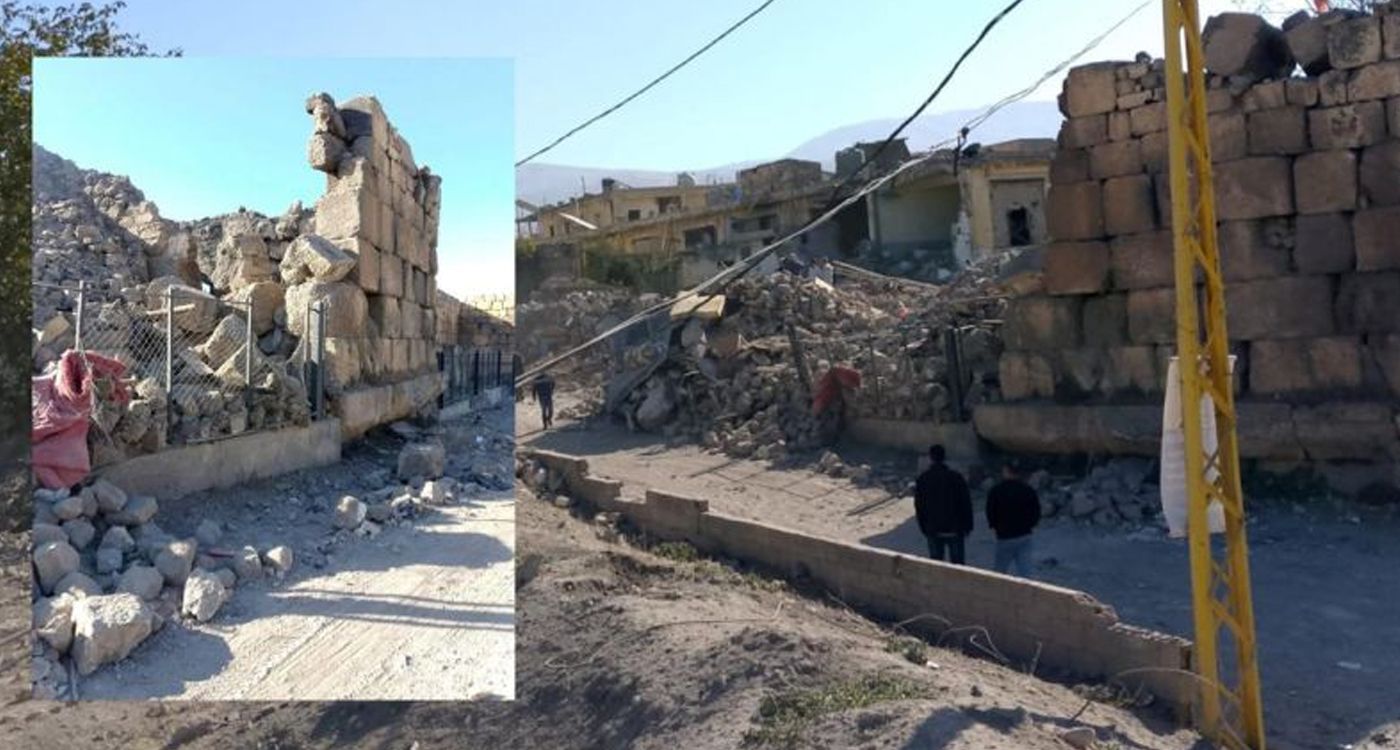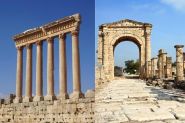
Tyre and Baalbeck, the crown jewels of Lebanon's heritage, face an existential threat from relentless bombardment. As airstrikes jeopardize these ancient wonders, the deafening silence from authorities raises urgent questions. Will these treasures crumble, or is there still time for decisive action to save them?
Tyre and Baalbeck, Lebanon’s ancient gems, are shaken by the relentless bombardment. Recent Israeli airstrikes near these UNESCO World Heritage sites jeopardize an irreplaceable cultural legacy. An evacuation order for Baalbeck has foreshadowed potential strikes with unpredictable consequences for the site. This relentless cycle of conflict endangers Lebanon’s heritage at every turn. In November 2023, caretaker Lebanese Minister of Culture’s decision to remove the “Blue Shield” protection from Baalbeck already sparked serious concern. Yet after Monday’s strike, no protective actions have been taken. As damage mounts and urgency grows, the silence of the Minister is glaring. In this deafening silence, critical questions arise: what will be done to safeguard these irreplaceable treasures?
Established almost 5,000 years ago, Tyre is a profound testament to history, having endured through the ages. As the cradle of Phoenician civilization, the city thrived in the 10th century BCE, establishing colonies that extended all the way to Carthage. In 332 BCE, during an epic siege, Alexander the Great permanently reshaped its geography by linking it to the mainland. Later, the Romans left a monumental legacy, evident in the remains of the hippodrome and baths. After falling under Muslim control in 636, Tyre became a key battleground during the Crusades, suffering devastation at the hands of the Mamluks in 1291. Its renaissance began in the late 18th century, but today, this rich historical heritage—designated a UNESCO World Heritage site since 1984—now faces a serious threat from ongoing bombings.
A Murdered City, A Heritage at Risk
On Monday, October 27, the Israeli army ordered the evacuation of Tyre’s 40,000 residents, transforming the vibrant city into a ghost town. Bombardments have concentrated on the downtown area and residential neighborhoods, casting a shadow over its invaluable archaeological treasures.
Sources involved in heritage preservation report that “the first warning issued by the Israeli army targeted Hay Al Ramel (the Al Ramel neighborhood), known as ‘Al Hamra Street’ in Tyre. This street historically linked the Al Bass site to the city during the Roman and Byzantine periods. Both the street and these sites are recognized as part of Tyre's UNESCO World Heritage Site, celebrated for their rich archaeological remains, including the remnants of the Roman road, an aqueduct, a Byzantine church, and the site of Hiram. During the Roman and Byzantine eras, Al Bass and the city formed a cohesive urban area, with sections of the aqueduct still visible along the street. While an evacuation order has been issued for this area, Israeli strikes have also targeted the waterfront along the Corniche, affecting historic buildings in Tyre's old city. The full extent of the damage in the old city remains unclear, but the proximity of a medieval cathedral to the recent strike zone raises serious concerns about potential devastation.”
Other sources express alarm that “the elevated urban center, with its Roman architectural jewels, is now within unrestrained range of artillery. The gymnasiums, baths, and iconic colonnaded avenue are under direct threat from airstrikes.” They add that “the Al Bass archaeological site, housing the grand Roman hippodrome and an expansive ancient necropolis, has not been spared. Massive destruction has already been reported in the historic center and the Al Ramel district adjacent to these archaeological sites. Numerous historic buildings show alarming structural damage, with the proximity of ancient ruins to modern residential zones putting these cultural treasures at significant risk.”
Each explosion weakens these centuries-old structures further, already vulnerable due to natural decay and chronic neglect caused by ongoing crises. The deep reverberations from each blast inflict damage that may only reveal itself too late, threatening an irreplaceable legacy.
Baalbeck: An Ancient Gem Under Siege
Baalbeck, one of Lebanon’s most iconic archaeological sites, now finds itself in the crossfire of conflict. In the historic city, two adjoining perimeter walls—one from the French Mandate, known as the Gouraud Wall, and the other from the Ottoman era—were destroyed on Monday by Israeli airstrikes. Yet, the core site remains unharmed, according to Baalbeck-Hermel Governor Bashir Khodr, speaking with This is Beirut.
The frontline has moved alarmingly close to some of the world’s most well-preserved Roman temples, also recognized as UNESCO World Heritage sites. For now, the main site remains miraculously intact, the governor confirms, though the intensity of nearby raids is an escalating concern.
Thick plumes of black smoke rising from nearby destruction threaten the millennia-old stones, while repeated tremors subtly weaken the structures. How much longer can these architectural gems withstand the unrelenting waves of violence?
A Heritage Worth Preserving at All Costs
In the face of this human tragedy, some may ask indignantly: what value do stones hold against lost lives? Yet, such a perspective overlooks the profound significance of this heritage—a silent yet powerful testament to our history.
These ruins, which have endured wars, occupations, and earthquakes, narrate the story of our people's greatness and resilience. As guardians of our collective memory, they impart invaluable lessons from the past to future generations. Allowing them to be destroyed under bombs would sever Lebanon from its very identity.
A race against time is underway to save what can still be preserved. However, amid the chaos of war, the pleas of archaeologists and heritage advocates often fall on deaf ears. The negligence of Lebanese authorities—who should urgently seek international assistance in this unprecedented crisis—is equally appalling.
It is unbearable to witness, powerless, as sites that embody the pride of both the country and humanity are placed in jeopardy. History will judge us harshly for allowing these wonders to succumb to violence through inaction and fatalism. Urgent measures must be implemented to protect these treasures, even if a ceasefire seems elusive.
With each passing day, Lebanon loses more of its soul, embodied in the stones that carry the weight of centuries and resonate with the splendor of past civilizations. If no action is taken, we will soon be left with nothing but silent, accusing fields of ruins that bear witness to our lost splendid heritage.





Comments